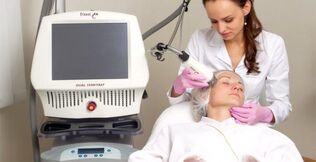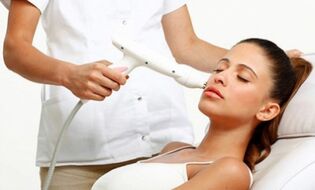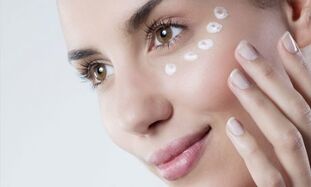Aging is a natural biological process that affects all tissues in the human body, including those that make up the human appearance. At the same time, facial tissues are more prone to aging than others because they are constantly affected by environmental factors, chewing, facial expressions, and speech functions. As the face is a kind of “business card” of a person, the issue of preserving and restoring the youthfulness of the facial skin is especially important and topical. Among the many methods and techniques used today to solve this problem, laser facial rejuvenation deserves special attention.
The essence of this method is the partial effect of the laser beam on the skin. The laser flux is divided into many of the thinnest fibers acting on microscopic areas of skin at a strictly specified depth and evaporates. Intact cells between these areas stimulate the active production of collagen and elastin, the two main "building blocks" that are less and less produced in the human body with age. After this procedure, the skin color improves, small and medium wrinkles are corrected, the bags under the eyes are removed and the oval of the face is tightened. At the same time, the rehabilitation period is reduced to a minimum. Fractional laser rejuvenation can be used not only as a stand-alone method, but also to improve the results of plastic surgery or skin laser rejuvenation.

Lasers for fractional laser rejuvenation
For the first time in the world, a patent for the principle of partial laser operation was issued in 2004. received by the American company Palomar Medical Technologies. Fractional laser systems are currently represented by various laser technology companies. The most common are Palomar and Fraxel laser systems, the famous American company Cynosure's Affirm laser, Candela's laser GentleYAG and others. Since all these settings have a common principle of operation, the outcome of the procedure is largely determined by the professionalism of the specialist performing the procedure.
Contraindications to the laser rejuvenation procedure
The absolute contraindications to the procedure are as follows:
- Pregnancy, breast-feeding.
- Inflammatory process foci in the affected area.
- Psoriasis and dermatoses.
- Outbreaks of herpes infection in the affected area.
- A chemical scrub in the intended treatment area less than two weeks before the procedure.
- Oncological diseases.
- Systemic blood, immune system, connective tissue diseases.
- Diabetes in the decompensation stage.
- Severe forms of hypertension and coronary heart disease.
- Varicose vein treatment area.
- Tendency to form keloid scars.
- Vitiligo family history.
Relative contraindications are active sun exposure in the last three weeks before the procedure, that is, fresh sunburn, as well as superficial and moderate scrubbing performed in the treatment area less than three weeks before the procedure.
Benefits of fractional laser rejuvenation
Due to the puncture effect, skin damage is minimal, so all traces disappear within 3-4 days after the procedure.
This method allows you to treat large areas of skin in a single procedure, maintaining and activating the regenerative resources of the skin, which ensures rapid rehabilitation and long-term growth of the positive effect.
The procedure does not require anesthesia, it can be performed on the neck, décolleté and eyes.
Side effects are rare. Possible complications include temporary appearance of red-purple spots in the treatment area, mild and transient itching, intensification of the herpes infection, changes in skin structure, including burns, peeling, and crusting. Skin scars, hyper- and hypopigmentation in the treatment area are very rare but can be permanent.
What is the full course of laser rejuvenation procedures
One fractional laser exposure session lasts 20 to 40 minutes, depending on the nature of the problem and the area treated. Repeated procedures are performed within 3-4 weeks. It usually takes 3-4 sessions in total. The maximum positive effect occurs within three months after the last procedure. It is recommended that surveillance sessions be held once every 10 to 14 months.

What to do after a laser facial rejuvenation procedure
A slight burning sensation that may be felt after the procedure disappears within 1-2 hours, and redness and slight swelling may persist for 1-3 days. External agents containing dexpanthenol (creams, ointments, sprays) such as Bepanten, Panthenol, D-Panthenol should be used during this period. After the listed symptoms have disappeared and before the next procedure, apply a cream with hyaluronic acid.
On the day of the treatment, you can take a shower and bath, but it is better to wait with a sauna and a swimming pool. The foundation can be used the day after the procedure.
It is mandatory to use sunscreen with a protection factor of at least 30, as the skin's metabolism is currently increasing and it is becoming particularly sensitive to sunlight.
Following the procedure, the recommendations of the specialist who performed the procedure must be followed. The choice of cosmetic products, their frequency and duration of use are determined individually and depend on the skin type and its characteristics.
Fractional laser rejuvenation is a cosmetological procedure in which the skin is exposed to a laser array made from a microwave. The purpose of this effect is to activate regeneration processes and collagenogenesis. This is a fairly new but already very popular hardware technique. It is otherwise called fax, partial laser surface resurfacing, or photothermolysis.
Principle and Variations of Fractional Laser Rejuvenation
How does a partial laser work? The micromachines emitted by the device cause a heat shock, in response to which the "lazy" skin cells become more active. To repair the damaged area, they share faster. Old cells that have proven inoperable are dying, leaving room for young ones. Heating of deep layers of the skin is accompanied by partial denaturation of proteins as well as the formation of new components of the intercellular matrix, including elastin and collagen.
Ablative and non-objective laser rejuvenation are distinguished by the depth of impact. The first is superficial and reminiscent of grinding. The upper layers of the skin are treated with laser in conjunction with the evaporation of moisture, damage to the epidermis. After healing, the skin becomes more toned, its relief and color are smoothed. During undoubted photothermolysis, the laser acts on the deep layers of the skin. In this case, no open wounds are formed.
Each type of rejuvenation has its advantages and minutes. Thus, after the first procedure, the effect of the ablation laser coating is observed. By applying this method, you can get rid of deep wrinkles and age spots, acne, stretch marks, scars. With a definite procedure, there is no risk of infection and the anti-aging effect has been observed for several years. This type of photothermolysis is recommended for individuals under 40 years of age with the first signs of aging: small wrinkles, decreased turgor.
Indications and contraindications for the procedure
The photothermolysis procedure is worth using, if any:
- Looseness, sagging skin.
- Both small and deep wrinkles, crow's feet.
- Pigmentation of any origin.
- Increased fat excretion.
- Enlarged pores prone to acne.
- Scars, stretch marks, acne.
- Vascular "stars" (pink).
- Bored face color.
Contraindications to partial laser rejuvenation are as follows:
- Allergy, psoriasis.
- Autoimmune diseases.
- Pregnancy, breast-feeding.
- Blood disorders.
- Skin infections, inflammation in the area of treatment.
- In the decompensation stage of any chronic disease.
- Oncology.
- Increased body temperature.
- Diabetes mellitus.
- Tendency to form keloid scars.
- Epilepsy.
Laser rejuvenation features
Preparation for the fractional photothermolysis procedure - refusal to visit the solarium and the beach for two weeks. All this time you also can not cleanse the skin, do a chemical scrub, take sulfonamides, fluoroquinolones, tetracyclines. Three days before the procedure, they stop visiting the pool, sauna, sauna, treat the area of †‹вЂ‹ the alleged effect with alcohol-containing cosmetics. To avoid complications, the beautician may prescribe antiviral and antibacterial drugs for this period. The day before the procedure should be spent without alcohol and cigarettes, refrain from the gym.
Before laser treatment, the skin is cleansed of cosmetics and impurities. In general, the laser effect is felt as an unpleasant tingling, but sometimes pain relief may be needed. In this case, the beautician applies an anesthetic to the prepared skin area. When the ointment is applied, it treats the skin with a laser. The duration of the procedure depends on the size of the treatment area and ranges from a few minutes to an hour. Finally, the skin is soothed with a nourishing cream.
In the first days after the procedure, it is not possible to use alcohol-containing products, parts of the body that have undergone photothermolysis, and compress them with compression laundry. It is recommended not to include physical activity for a week, to visit the pool, sauna or bath, to limit the time spent on the street. Three times a day, the skin is moisturized with a special cream. And so for half a month. It is undesirable to do scrubbing, use cosmetics with retinol, salicylic acid. It is necessary to use a cream with a sun protection factor of 35 or more for two months.
How many procedures do you need to get results? What effect can you expect?
The rehabilitation period after partial laser rejuvenation lasts from 3 to 7 days. The speed of recovery is highly dependent on lifestyle. Alcohol consumption, smoking, overactivity, an unbalanced diet, insomnia and anxiety can all slow down regeneration processes.
Redness and slight swelling of the skin may occur during the first three days after the laser. Anesthetics and skin cooling can help reduce the feeling of discomfort. Normally, if skin tightness is felt during the week, there are scaly areas. A side effect of the procedure can be a bronze tan, which automatically goes away after half a month.
A continuous result after fractional photothermolysis occurs after 2-5 procedures. Specifically, the number of sessions can only be determined by a beautician based on baseline data. The intervals between procedures are 3-4 weeks. Fractional laser rejuvenation inhibits aging processes: wrinkles disappear or become less noticeable, turgor increases, pore severity decreases and facial color improves. This method is an effective tool in the fight against scars, pigmentation, after acne, stretch marks.
Laser fractional rejuvenation is one of the three most popular hardware cosmetic procedures. Its advantages are efficiency, short healing period, physiology. The result is visible after the first procedure and lasts up to three years. The method has a wide range of indications. The laser exposure depth can be selected.
A woman of any age wants to see beautiful skin in the mirror, but not everyone is ready to go under a plastic surgeon’s knife.
In this case, partial rejuvenation will be useful using a laser, which in modern cosmetology occupies one of the first places for aging procedures.
Types and methods of exposure
Ablation photothermolysis
There are two methods of photothermolysis, each suitable for different cases. The right choice in favor of the best option will help the beautician make the first appointment.
This method is suitable for rejuvenating skin that has just started to age naturally.
The laser microparticle network only affects the upper layers of the epidermis, forcing it to regenerate in a short time.
The result will appear after the first procedure as soon as the wound heals.
Undoubted photothermolysis
This method is a slightly more serious intervention. The laser beam penetrates the deep layers of the epidermis, despite the cells outside.
The lesion also promotes the production of elastin and collagen, as in ablat photothermolysis.
The healing process takes longer and the effects are more pronounced. Suitable for eliminating serious facial problems.
Readings
Anyone who wants to rejuvenate without serious braces can use this method.
Fractional laser treatment eliminates many facial imperfections, including:
- very bright wrinkles on the forehead;
- nasolabial wrinkles;
- crow's foot thread around the eyes;
- epidermis "flowing down";
- skin pigmentation, scars, scars, spider veins;
- enlarged pores, acne problem.
Laser therapy has been shown to be very effective in eliminating all of these problems.
The only caveat is that multiple procedures may be required depending on the severity of the imperfection.
Contraindications
Like any other external influence on the body, fractional laser rejuvenation has its own contraindications, in which it is forbidden to resort to such a procedure.
This includes:
- severe inflammation of the face;
- infectious, fungal skin lesions;
- epidermal diseases - psoriasis, eczema;
- excessive dryness of the skin;
- malignancies in the body;
- history of epilepsy;
- heart disease;
- varicose veins on the face;
- herpes in the acute stage;
- pregnancy, lactation;
- immunodeficiency states;
- bronchial asthma, severe allergic reactions;
- neurological diseases.
All contraindications are conditional, that is, the cosmetologist weighs the entire risk to the patient.
Sometimes you should first treat your skin problems or wait for a remission of your chronic illness, followed by rejuvenation.
Preparation
Because the intervention is not a surgery, no serious preparation is required. You should first consult a beautician who will assess the condition of your skin and also make recommendations on how to photorejuvenate it.
The patient is obliged to inform the doctor about all medical histories and diseases, as well as about exacerbations of chronic diseases during the last six months.
If possible, a specialist will advise you to visit a specialist to assess the safety of the procedure.
You should also have a blood and urine test to detect or eliminate inflammatory processes in the body. The date of the first visit is then set.
Execution
Fractional laser skin rejuvenation in the facial area is performed on an outpatient basis, that is, the patient comes, the treatment is performed, and then he goes home.

The beautician will pre-apply the lidocaine with an anesthetic cream or ointment based on cosmetology.
In fact, the procedure is not too painful, so sometimes the therapy is performed without going through this stage.
Keep in mind that the use of local anesthetics slightly inhibits the natural regeneration of the skin afterwards.
The patient then lies on the couch and the specialist adjusts the depth of penetration of the laser beam with a special device. The device is designed for certain areas of the epidermis where the laser penetrates deeply.
Manipulations last from half an hour or more, depending on the area you want to process with the device. During the procedure, the patient may experience a slight tingling sensation as well as an unpleasant odor.
Immediately after the session, a grid of red dots is visible on the face, the skin is red, slightly swollen, so it is better to take care in advance on the way home.
Possible complications
Fractional rejuvenation does not rule out complications. In some cases, they are normal and go away in a few days.
Others develop due to inexperience of the beautician or lack of proper facial care during rehabilitation.
What is not the norm:
- severe pain or swelling at the site of the laser beam;
- lesions do not heal within two weeks;
- pigmentation and scarring appeared.
Mild redness, scaling, and itching are a predictable condition for any type of epidermis.
Such effects resolve spontaneously within 1-2 weeks without leaving any visual defects.
Rehabilitation
The outcome of the procedure is greatly influenced by the patient's own behavior. He must closely monitor the skin, protect it from the aggressive environment, treating not to apply decorative cosmetics.

General guidelines:
- Apply dexpanthenol-based ointment for the first three days of the woundthis will contribute to the rapid healing of micro-lesions. Later, it is recommended to use a light moisturizing cream with hyaluronic acid, as advised by a cosmetologist.
- Washing is not prohibited.For 2 weeks, the epidermis should not be exposed to strong heat, so it is better to abstain from baths and saunas, not to take a bath.
- You should not go outside without sunscreen,and better choose sunscreen from 50. If this is not done, hyperpigmentation will appear. The cosmetic product should be applied until complete healing, even if it is outdoors in winter.
After a couple of weeks, it is recommended to visit the specialist who performed the partial laser rejuvenation again. He has to assess the condition of the facial skin, not to include complications.
Forecast
The result can be seen immediately after treatment if the defects were not very pronounced. Deep wrinkles or scars need to be removed in several ways.
Visually, the skin is smoother, natural in color, in 99% of cases the face is tightened and visibly blooms.
One percent is for unforeseen circumstances, inadequate care, and lack of medical qualifications.
Advantages of the method
For many patients, this method wins with significant benefits that are worth noting. After choosing photothermolysis, a person gets:
- low cost and high efficiency;
- painlessness;
- effect even from a single procedure;
- non-invasiveness;
- Lack of strong side effects.
In addition, the action of a laser simultaneously solves several problems of the aesthetic component of the epidermis, which is good news.
Disadvantages
If you choose the wrong rejuvenation clinic or do not strictly follow the cosmetologist's recommendations, you can earn huge age spots on the side of the face that will not be easy to remove.
In addition, laser treatment lasts quite a long time, during which the patient feels an unpleasant odor of damaged skin that not everyone is able to withstand.
Another drawback is the incomplete result of a single procedure with deep depressions, scars, and wrinkles.
Review of Opinions
Fractional rejuvenation is becoming more popular in cosmetology. Every year, more and more women choose a laser instead of a surgical scalpel.
















































































